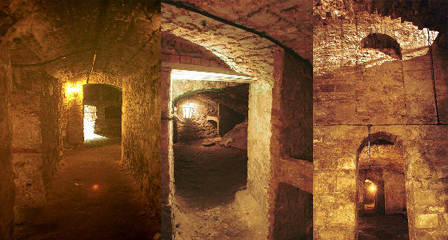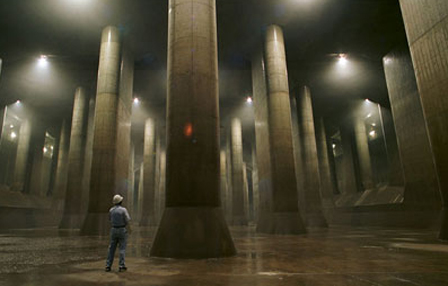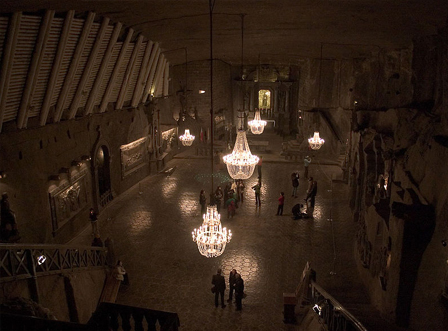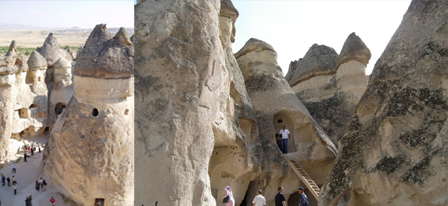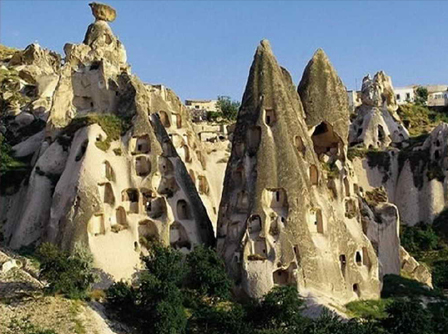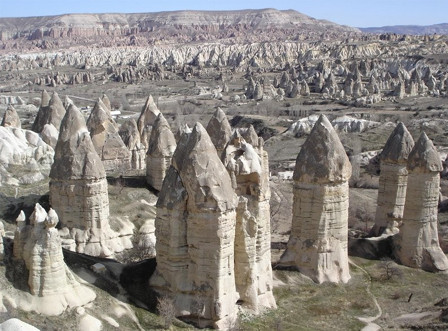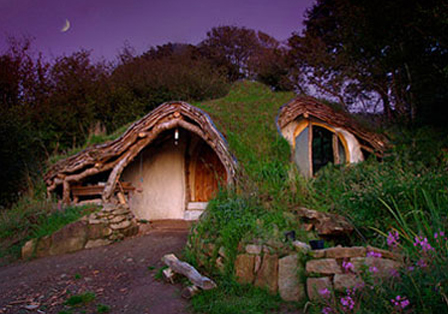
By Brian Handwerk
The Giza Pyramids, built to endure an eternity, have done just that. The monumental tombs are relics of Egypt's Old Kingdom era and were constructed some 4,500 years ago.
Pyramids of Giza, Egypt
Egypt's pharaohs expected to become gods in the afterlife. To prepare for the next world they erected temples to the gods and massive pyramid tombs for themselves—filled with all the things each ruler would need to guide and sustain himself in the next world.
Pharaoh Khufu began the first Giza pyramid project, circa 2550 B.C. His Great Pyramid is the largest in Giza and towers some 481 feet (147 meters) above the plateau. Its estimated 2.3 million stone blocks each weigh an average of 2.5 to 15 tons.
Khufu's son, Pharaoh Khafre, built the second pyramid at Giza, circa 2520 B.C. His necropolis also included the Sphinx, a mysterious limestone monument with the body of a lion and a pharaoh's head. The Sphinx may stand sentinel for the pharaoh's entire tomb complex.
The third of the Giza Pyramids is considerably smaller than the first two. Built by Pharaoh Menkaure circa 2490 B.C., it featured a much more complex mortuary temple.
Each massive pyramid is but one part of a larger complex, including a palace, temples, solar boat pits, and other features.
Building Boom
The ancient engineering feats at Giza were so impressive that even today scientists can't be sure how the pyramids were built. Yet they have learned much about the people who built them and the political power necessary to make it happen.
The builders were skilled, well-fed Egyptian workers who lived in a nearby temporary city. Archaeological digs on the fascinating site have revealed a highly organized community, rich with resources, that must have been backed by strong central authority.
It's likely that communities across Egypt contributed workers, as well as food and other essentials, for what became in some ways a national project to display the wealth and control of the ancient pharaohs.
Such revelations have led Zahi Hawass, secretary general of Egypt's Supreme Council of Antiquities and a National Geographic explorer-in-residence, to note that in one sense it was the Pyramids that built Egypt—rather than the other way around.
Preserving the Past
If the Pyramids helped to build ancient Egypt, they also preserved it. Giza allows us to explore a long-vanished world.
"Many people think of the site as just a cemetery in the modern sense, but it's a lot more than that," says Museum of Fine Arts, Boston, and Tufts University Egyptologist Peter Der Manuelian. "In these decorated tombs you have wonderful scenes of every aspect of life in ancient Egypt—so it's not just about how Egyptians died but how they lived."
Tomb art includes depictions of ancient farmers working their fields and tending livestock, fishing and fowling, carpentry, costumes, religious rituals, and burial practices.
Inscriptions and texts also allow research into Egyptian grammar and language. "Almost any subject you want to study about Pharaonic civilization is available on the tomb walls at Giza," Der Manuelian says.
To help make these precious resources accessible to all, Der Manuelian heads the Giza Archives Project, an enormous collection of Giza photographs, plans, drawings, manuscripts, object records, and expedition diaries that enables virtual visits to the plateau.
Older records preserve paintings or inscriptions that have since faded away, capture artifacts that have been lost or destroyed, and unlock tombs not accessible to the public.
Armed with the output of the longest-running excavations ever at Giza, the Harvard-Museum of Fine Arts, Boston Expedition (1902-47), Der Manuelian hopes to add international content and grow the archive into the world's central online repository for Giza-related material.
But he stresses that nothing could ever replicate, or replace, the experience of a personal visit to Giza.
And people the world over seem to agree. Each year they flock to see the last wonder of the ancient world and infuse the modern Egyptian economy with billions of dollars—continuing another ancient Giza tradition as one of the world's most popular tourist destinations.

























